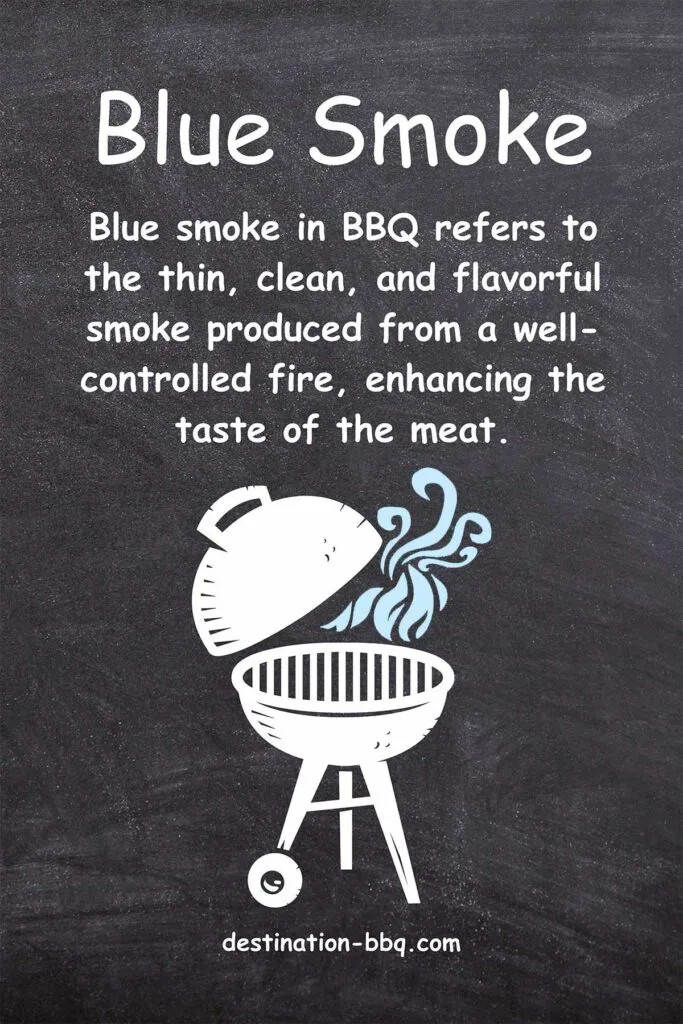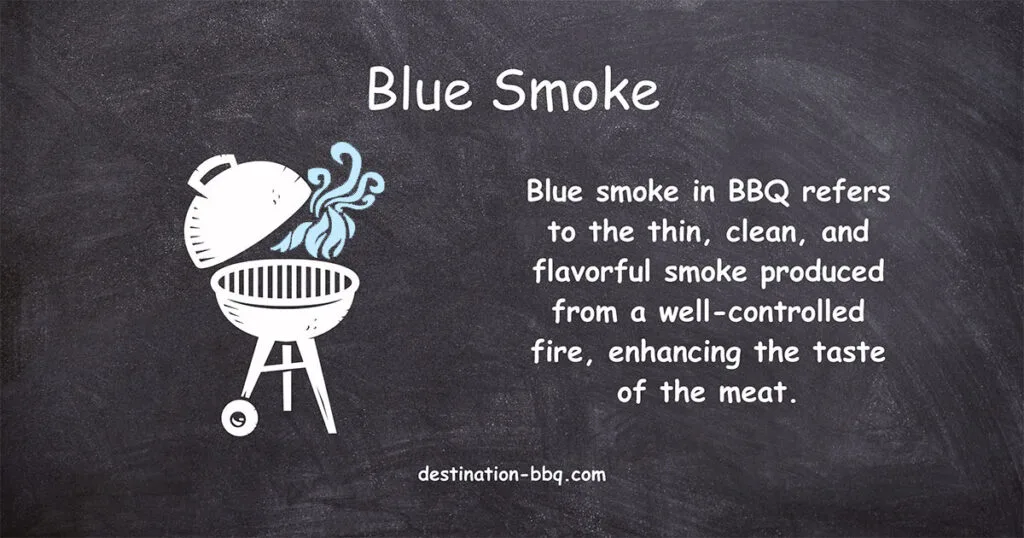
What is Blue Smoke?
Blue smoke refers to the desirable smoke produced during the barbecue process, characterized by its thin, light appearance with a bluish hue. It signifies a clean burning fire with complete combustion, resulting in flavorful and aromatic compounds that enhance the taste of the meat. Blue smoke is distinct from thick, sooty smoke, which contains undesirable particles like creosote and can impart an unpleasant taste.
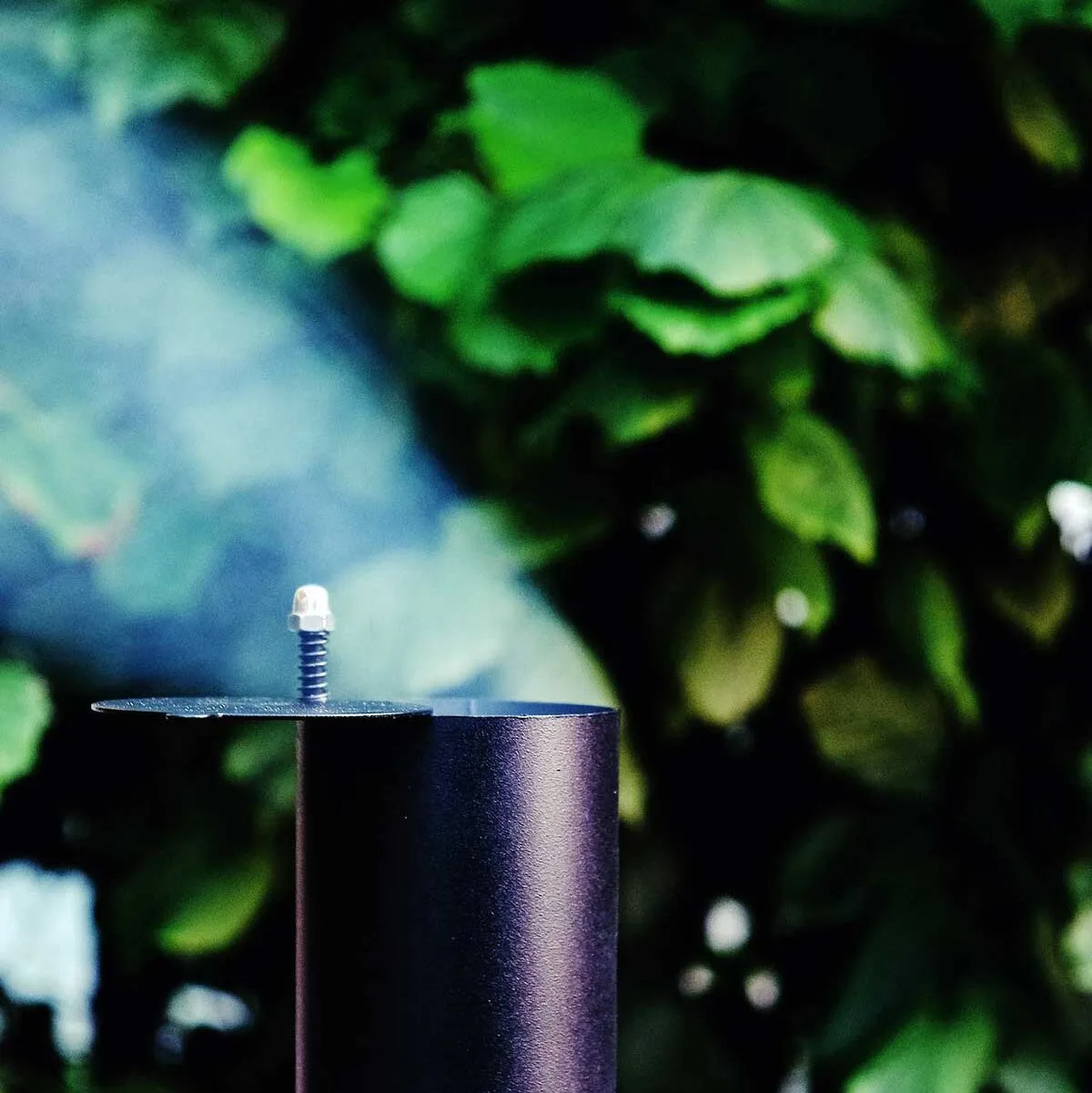
“Landmann Tennessee 200” (CC BY-NC 2.0) by hepp
Key Takeaways
- Blue smoke is the desired smoke produced during barbecue, indicating a clean burning fire and complete combustion.
- Thick, sooty smoke should be avoided as it contains particles like creosote that can negatively impact the flavor of the meat.
- Blue smoke is characterized by its thin, light appearance with a bluish hue and is responsible for imparting flavorful and aromatic compounds to the meat.
- The amount of smoke needed is minimal, and it is important to focus on achieving the right type of smoke rather than excessive smoke.
Understanding Thin Blue Smoke
Picture the thick, black smoke rolling out of the chrome exhaust pipes as the truck’s engine struggles to push the massive payload forward. If that exhaust looks anything like the smoke coming out of your backyard smoker, then you’re cooking with dirty smoke, which is the result of a fire that’s almost out, or one that never really got going.
Clean wood-fire produces clean, almost transparent smoke, which is thinner and exits the exhaust rapidly. It’s sometimes referred to as blue smoke, unlike the thick gray smoke of a dirty fire that could block out the sunlight.
Daniel Vaughan, Texas Monthly
“If you have a clean fire, the smoke from your smokestack should look thin and light with a bluish hue. What you don’t want is smoke that’s thick and sooty or gray-black. The heavier and dirtier the smoke looks, the more particles like creosote it contains. If you’ve ever eaten a piece of brisket that tasted like the inside of an ashtray, creosote was likely to blame. Meat doesn’t need a lot of smoke. What it needs is the right smoke.”

Gifts for Your Favorite Pitmaster
(even if that’s you!)
On
Etsy
Shirts, hats & more designed exclusively by Destination BBQ
These words, spoken by famed pitmaster Aaron Franklin in his Masterclass on BBQ, hold the secret to unlocking the true essence of great barbecue.
Within the realm of smoke, there exists a delicate balance that separates mediocrity from mastery. One key element is the Thin Blue Smoke, a shimmering wisp of perfection that signifies a clean and precise fire. It is the difference between a culinary masterpiece and a disappointing ashtray.
Join us as we venture into the realm of smoke, uncovering the mysteries of Thin Blue Smoke and its profound impact on the art of barbecue.
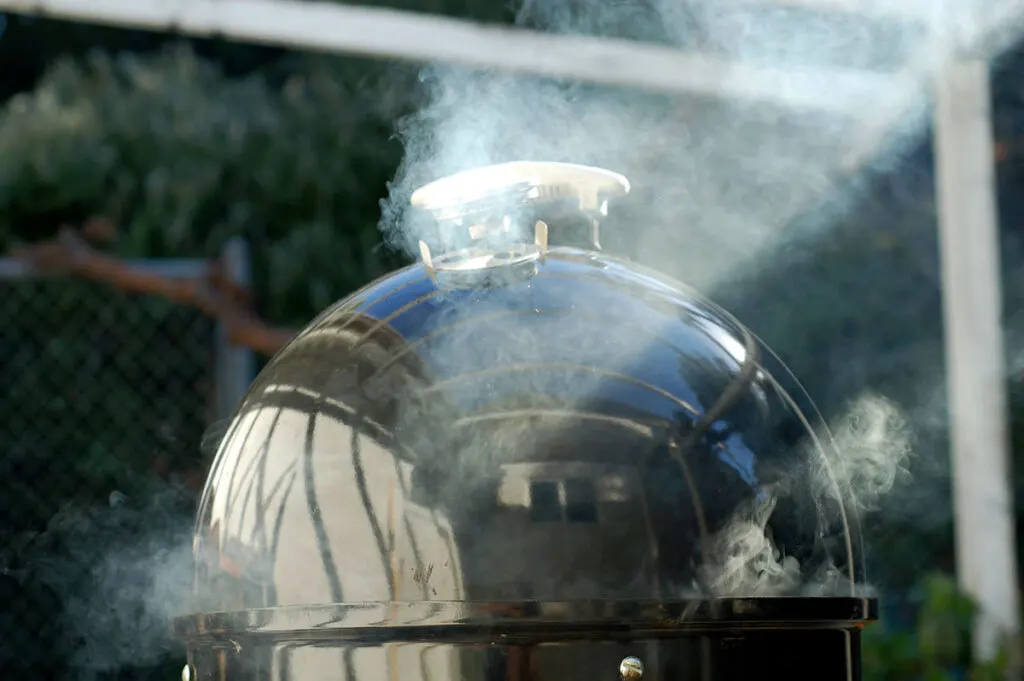
Smoke Studies
Understanding the science behind blue smoke is essential for any aspiring pitmaster aiming to achieve the right flavor profiles. The creation of blue smoke is rooted in the intricate interplay of combustion and the composition of smoke itself.
Smoke, the soul of barbecue, emerges from the combustion of wood or charcoal. It is not merely a visual spectacle but a result of complex chemical reactions.
As the wood or charcoal burns, organic compounds like cellulose, hemicellulose, and lignin undergo a process called pyrolysis, breaking down into combustible gases and charcoal.
Cellulose and hemicellulose, which form the structural components of wood, release carbonyls during combustion. These compounds contribute to the color and impart sweet, flowery, and fruity aromas to the smoke.
On the other hand, the breakdown of lignin produces aromatic compounds known as phenolics. These phenolics, such as syringol and guaiacol, are responsible for the distinct smokiness and spiciness found in barbecue.
The production of blue smoke hinges on achieving a balanced combustion process. According to Joe Clements of Smoked BBQ Source, “Think of smoke as a seasoning. Too much leads to an overpowering smoky flavor and a bitter aftertaste.”
To avoid excessive smoke, it is crucial to maintain a clean-burning fire. Incomplete combustion results in the accumulation of creosote, a thick, black residue that imparts an undesirable bitter taste to the meat.
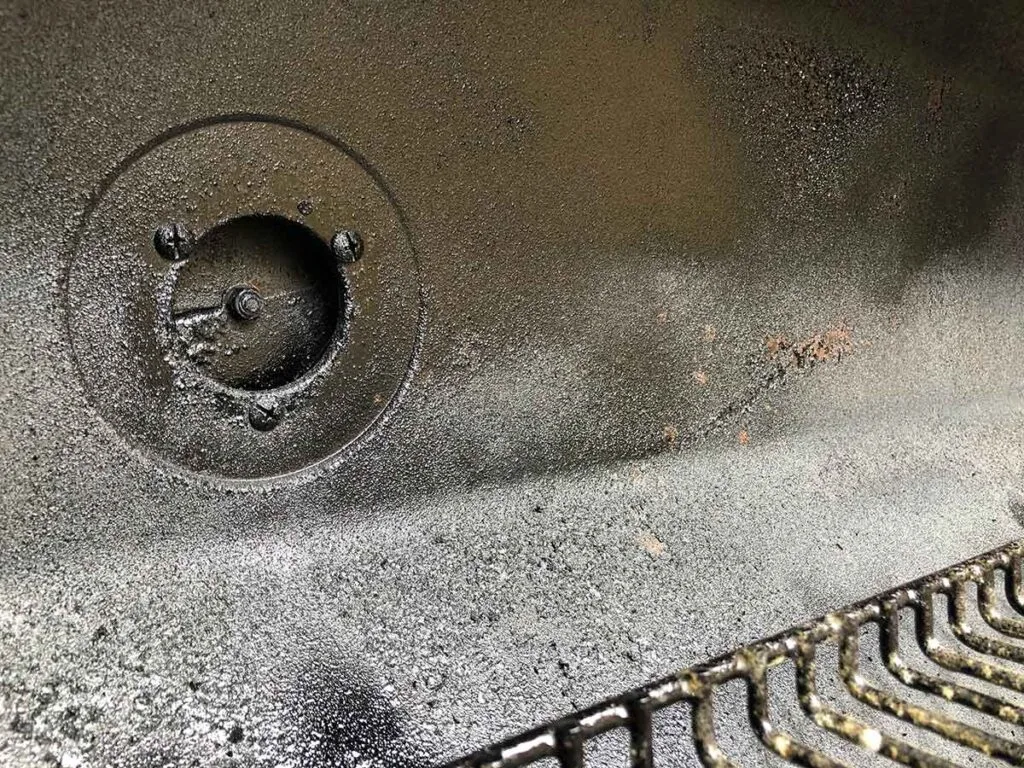
Efficient combustion is influenced by factors such as fuel, oxygen, and heat. Proper fire management plays a vital role in obtaining blue smoke. Maintaining the right combination of fuel and airflow ensures more efficient combustion and the production of thin, light smoke.
As Clements explains, “If you see thin, blue smoke coming out of your smoker, that indicates a clean burning fire. This is what you want to aim for every time you fire up the smoker.”
Wood selection also influences the smoke composition. Different types of wood can impart distinct flavors to the meat. For instance, hardwoods like mesquite and hickory are known for their robust smoky flavors, while fruit and nut woods offer a subtler, sweeter profile.
It is important to avoid using woods treated with chemicals or those high in resin content, as they can produce undesirable flavors and potentially harmful compounds.
By understanding the science behind blue smoke, pitmasters can hone their craft, unlocking the full potential of their barbecue.
In the next section, we will delve into practical tips and techniques that enable the consistent production of blue smoke, from fire management and airflow control to the importance of maintaining a clean smoker. Armed with this knowledge and with some authentic recipes in hand, you will be well-equipped to embark on a flavorful journey, elevating your barbecue to new heights.
Tips for Achieving Blue Smoke
Now that we understand the significance of blue smoke and the science behind it, let’s explore practical tips and techniques to help you consistently achieve that desirable, flavorful smoke profile in your barbecue.
- Fire Management: The foundation of producing blue smoke lies in effective fire management. It involves finding the right balance between fuel, airflow, and heat to ensure clean combustion.
- Use the Right Type of Wood: The choice of wood can greatly impact the flavor and quality of the smoke. Different woods have distinct characteristics, ranging from robust to subtle flavors. Avoid using chemically treated woods or those high in resin content, as they can introduce unwanted flavors and potentially harmful compounds. Experiment with various hardwoods, fruit woods, and nut woods to discover your preferred flavor profiles.
- Airflow Control: Managing airflow is crucial for controlling the combustion process and achieving blue smoke. Understand the importance of having the right combination of airflow and fuel to ensure efficient combustion. Adjust the intake and exhaust vents on your smoker to regulate the airflow and maintain the desired temperature. Monitoring the color and amount of smoke being produced will help you make adjustments as needed.
- Maintain a Clean Smoker: A clean smoker is essential for consistent production of blue smoke. Creosote buildup from incomplete combustion can lead to bitter-tasting meat and make your smoker difficult to clean. Regularly clean your smoker, removing ash, grease, and soot to prevent the accumulation of creosote. This not only ensures optimal smoke production but also prolongs the lifespan of your smoker.
- Practice Patience and Moderation: Remember, achieving blue smoke is not about creating billows of thick smoke but rather about finding the right balance.
By applying these tips and techniques, you can learn to consistently produce blue smoke and elevate the taste and aroma of your barbecue. Experimentation and practice will help you refine your skills and discover your own personal preferences.
In the next section, we will explore the impact of blue smoke on different types of meat and delve into the art of pairing wood flavors with specific meats for a harmonious flavor experience.
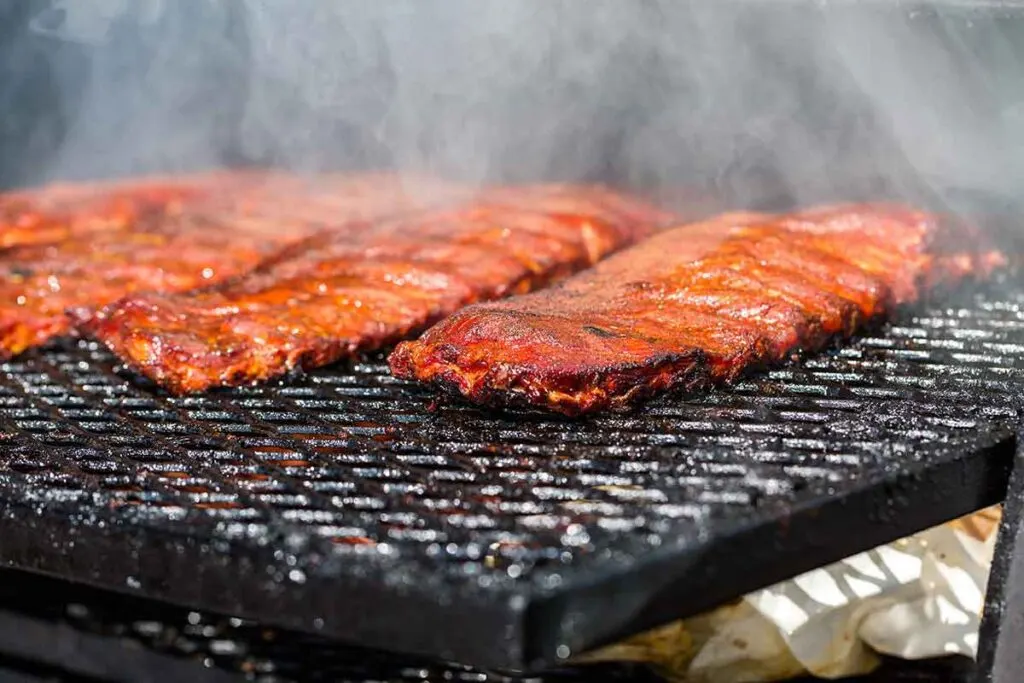
The Impact of Blue Smoke on Different Meats and Wood Pairings
Blue smoke not only enhances the overall flavor of barbecue but also interacts differently with various types of meat. Understanding these interactions and the art of pairing wood flavors with specific meats can elevate your barbecue to new heights.
- Beef: When it comes to beef, the rich and bold flavors can stand up to stronger wood flavors like hickory or mesquite. As Clements suggests, “Woods that impart stronger flavor characteristics can easily overpower the flavor of the meat.” Achieving a balanced smoke profile is key, ensuring that the smoke complements the meat without overpowering it.
- Pork: Pork, with its milder flavor, can benefit from a variety of wood flavors. Fruitwoods like pecan, apple and cherry can impart a subtle, sweet undertone to pork, while hickory and oak can provide a richer, smoky taste. The choice of wood depends on personal preference and the desired flavor profile you want to achieve.
- Poultry: Poultry, such as chicken and turkey, can be more delicate in flavor and texture. Using lighter woods like apple or pecan can add a touch of sweetness without overwhelming the meat. The goal is to enhance the natural flavors of the poultry while still allowing them to shine through.
- Seafood: Seafood, with its delicate and nuanced flavors, requires a gentle touch when it comes to smoke. Woods like apple or peach can lend a subtle smokiness that complements seafood without overpowering its natural taste. The key is to use a lighter hand with smoke and focus on maintaining the freshness and tenderness of the seafood. Planks of cedar and alder are commonly used as well.
Remember that these wood pairings are not set in stone and can be adjusted based on personal preference and experimentation. Each wood imparts its own unique flavors and aromas, so don’t be afraid to explore and find your own signature combinations.
Blue smoke is the ideal goal for your barbecue, representing clean combustion and a well-regulated fire. By implementing proper fire management techniques, using the right wood, controlling airflow, and maintaining a clean smoker, you can learn to consistently achieve that elusive thin blue smoke.
Understanding the impact of blue smoke on different meats and experimenting with wood pairings will allow you to create complementary flavors that elevate your barbecue to new heights. So fire up your smoker, embrace the art of blue smoke, and savor the mouthwatering results that it brings to your plate.
« See Full Glossary Index